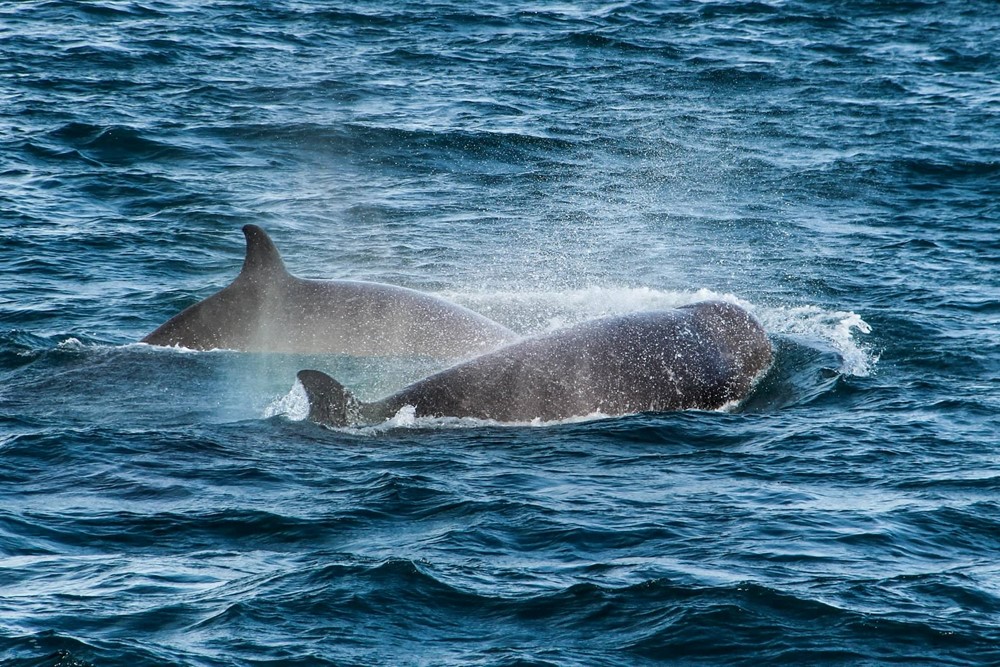MYSTERIOUS LIKE BOTTLENOSE WHALES

As expressed in my previous post, Skjálfandi Bay displays a variety of wildlife throughout the season - among them, several species of cetaceans:
Another species showing up in the waters of Skjálfandi Bay is the northern bottlenose whale. Unlike some other whales, they seem to just pass by as they move somewhat southwards in late summer or early autumn whilst they have spent the summer time in the arctic. However, they are actually not believed to be migratory as other whale species.
Since the beginning of September they have been showing up on and off during some of our tours. Unlike other whale species that we are able to observe, bottlenose whales tend to dive very long (it is believed they are able to stay away diving for up to two hours) and often swim far distances whilst underwater. Also, they usually prefer to stay in deep waters as they dive into depths of over 1000m (Skjálfandi Bay is by far not as deep)! Therefore, you can count yourself as very lucky if you managed to see them on one of our trips!
Bottlenose whales are social animals and usually show up in groups of up to 20 individuals, their social structures however are more a fission-fusion. These groups are usually segregated by sex and even though an individual might be happy to just go and do its own thing for a while, groups come back together and even long-term relationships between animals could be observed.
Belonging to the group of the toothed whales, this species has two teeth in the lower jaw, but these teeth only emerge on the males.
Bottlenose whales are born with a rather dark skin color that then becomes lighter as they age. Also, as they get older, their skin gets more and more streaked with scars from either tussles or bites of the cookiecutter shark, which is believed to be their only natural predator.
- Sarah
Photos by Sarah Arndt (captain / guide)

